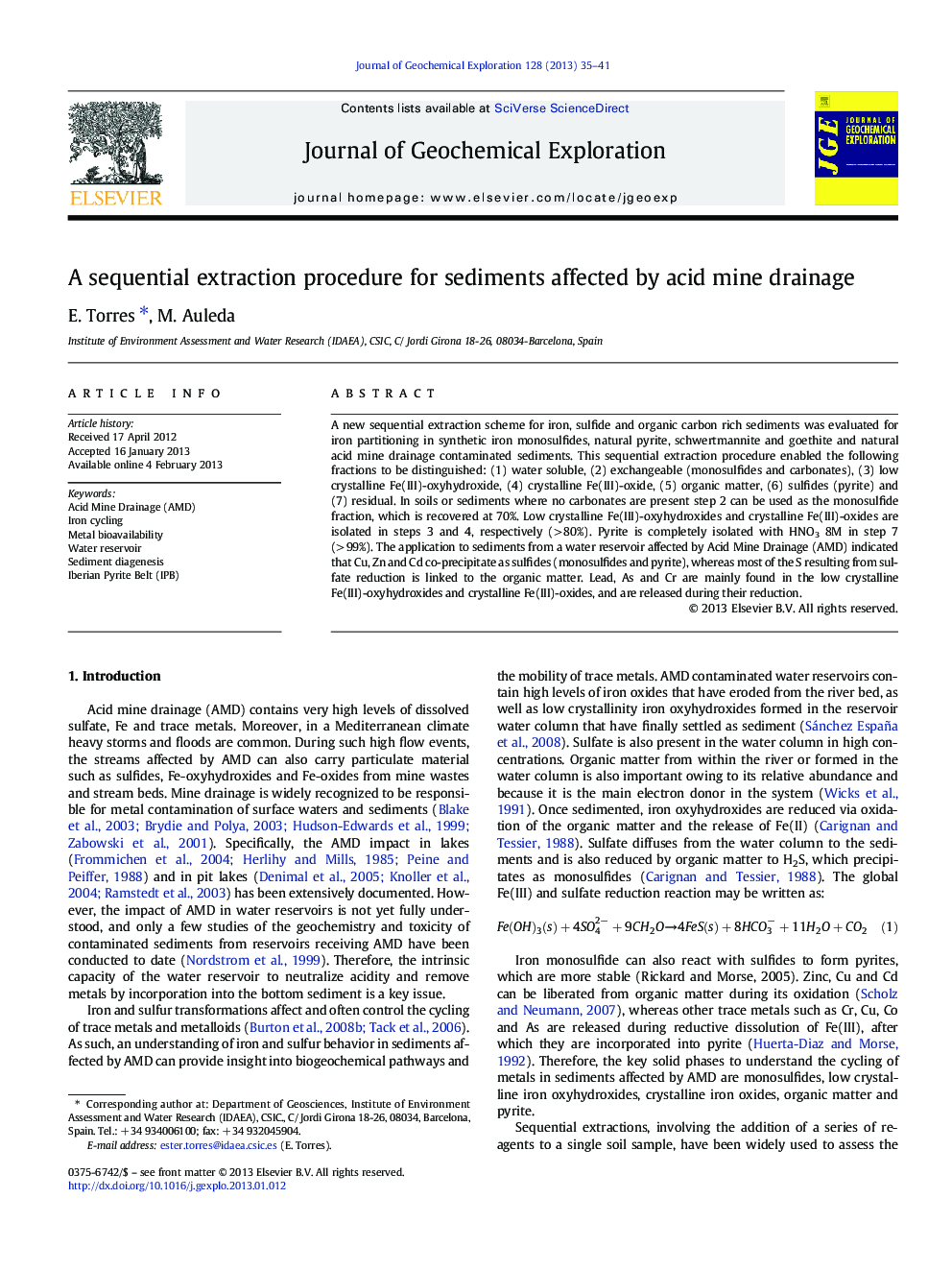| Article ID | Journal | Published Year | Pages | File Type |
|---|---|---|---|---|
| 4457625 | Journal of Geochemical Exploration | 2013 | 7 Pages |
A new sequential extraction scheme for iron, sulfide and organic carbon rich sediments was evaluated for iron partitioning in synthetic iron monosulfides, natural pyrite, schwertmannite and goethite and natural acid mine drainage contaminated sediments. This sequential extraction procedure enabled the following fractions to be distinguished: (1) water soluble, (2) exchangeable (monosulfides and carbonates), (3) low crystalline Fe(III)-oxyhydroxide, (4) crystalline Fe(III)-oxide, (5) organic matter, (6) sulfides (pyrite) and (7) residual. In soils or sediments where no carbonates are present step 2 can be used as the monosulfide fraction, which is recovered at 70%. Low crystalline Fe(III)-oxyhydroxides and crystalline Fe(III)-oxides are isolated in steps 3 and 4, respectively (> 80%). Pyrite is completely isolated with HNO3 8M in step 7 (> 99%). The application to sediments from a water reservoir affected by Acid Mine Drainage (AMD) indicated that Cu, Zn and Cd co-precipitate as sulfides (monosulfides and pyrite), whereas most of the S resulting from sulfate reduction is linked to the organic matter. Lead, As and Cr are mainly found in the low crystalline Fe(III)-oxyhydroxides and crystalline Fe(III)-oxides, and are released during their reduction.
► A sequential extraction for Fe, SO4 and organic matter rich sediments was designed. ► The protocol to distinguish Fe oxides and sulfides is much simpler than previous ones. ► It has been successfully applied to sediments from a water reservoir affected by AMD. ► Cu, Zn and Cd precipitate as sulfides and co-precipitate with FeS and pyrite. ► Pb, As and Cr are released from the low-crystalline Fe(III)-oxyhydroxide reduction.
